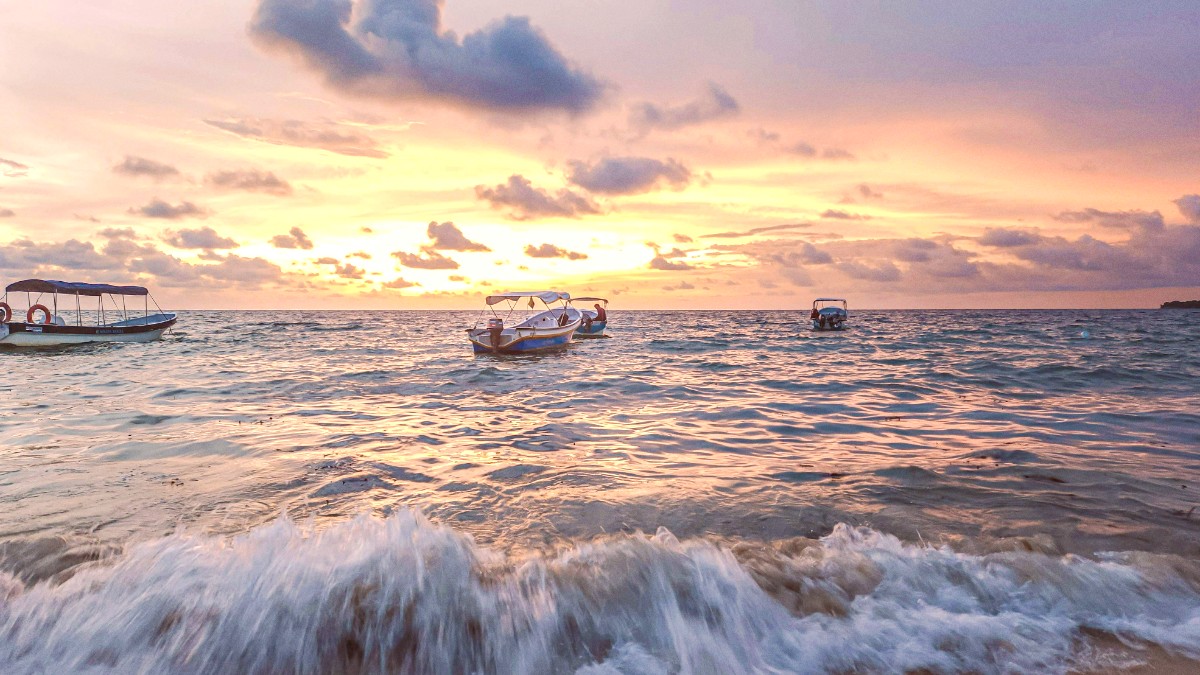
The Coast, Kenya
Mombasa cuisine blends African, Arab, Indian, and some European influences. This culinary heritage reflects centuries of trade and cultural exchange along the East African coast.
Influences incorporate aromatic spices from the Middle East and India, fresh coconut milk, and abundant fresh seafood from the Indian Ocean.
Staples: Rice ("wali"), coconut milk ("madafu"), flatbreads like chapati and mahamri form the basis. Proteins: Fresh seafood (prawns, crab, snapper, tuna) features prominently. Chicken, goat, and beef are also common.
Spices: Cardamom, cloves, cinnamon, cumin, turmeric, ginger, and garlic give dishes rich aroma and taste. Chili often adds a pleasant kick. Flavors: Characterized by rich, aromatic, and complex tastes. A subtle sweetness often comes from coconut or dates.
Coastal cuisine emphasizes seafood, coconut, and spices more heavily than inland Kenyan cuisine. Many dishes are slow-cooked stews or elaborate rice preparations designed to allow flavors to meld.
The slow cooking methods contribute to the deep and complex flavors that are a hallmark of Mombasa's culinary style.
The proximity to the ocean and fertile land ensures fresh, high-quality ingredients, directly influencing the taste of dishes.
Biryani: A flavorful rice dish, cooked with tender meat (chicken, beef, or goat) or vegetables, spiced with saffron, cardamom, and cloves. Pilau: Similar to biryani but simpler, rice cooked in a spiced broth with meat.
Many Swahili restaurants serve these staple dishes.
Wali wa Nazi: Rice cooked in fragrant coconut milk, a creamy and aromatic accompaniment. Samaki wa Kupaka: Grilled fish, often snapper or kingfish, smothered in a rich, spiced coconut sauce, a true seafood highlight.
Ubiquitous in coastal eateries and a seafood highlight.
Mishkaki: Grilled marinated meat skewers (beef, chicken, or goat), a popular street food. Viazi Karai: Deep-fried potato balls coated in a spiced batter, often served with a tangy tamarind dipping sauce ("ukwaju").
Popular street food options, great for a quick snack.
During Ramadan and Eid al-Fitr, special sweets and rich, celebratory dishes are prepared city-wide.
Seafood availability remains seasonal, with the best catches varying by time of year.
Luxury resorts on the North and South Coasts feature high-end dining experiences, offering international and fusion cuisine in elegant settings.
Numerous options exist in Nyali and Bamburi. These restaurants feature a mix of Swahili, Indian, Italian, and other international cuisines.
"Vibandas" (small, local eateries) are found throughout the city. They feature authentic and very affordable Swahili dishes. Street food stalls are abundant in markets.
Indian cuisine has a strong presence due to a large Indian diaspora (e.g., Mombasani Indian Restaurant). Italian (pizzerias) and Chinese restaurants are available, especially in tourist areas.
Most resort restaurants present a mix of international and local dishes to cater to diverse tastes.
Finding familiar international flavors alongside traditional coastal dishes is easy, especially in areas like Nyali which cater to a wider tourist base.
Expect a wide range of options to satisfy various palates.
Posh & elegant ambiance
Relaxed & social settings
Lively & authentic experience
Scenic & airy locations
Halal: Mombasa has a large Muslim population. Most meat served in local restaurants and butcheries is halal. You can inquire to confirm. Many hotels also feature halal options.
Kosher: Extremely limited. Self-catering with certified packaged foods or bringing your own is advisable.
Gluten-Free: More challenging. Rice-based dishes are generally safe, but cross-contamination can occur. Communicate clearly: "Mimi siwezi kula ngano" (I cannot eat wheat).
For complex dietary needs, research restaurants in advance or consult with local dietary associations.
Carry necessary medications and a doctor's note in case of severe allergies. Know the location of local medical facilities.
Some local tour operators or guesthouses, specifically in Old Town, present Swahili cooking classes. These often incorporate a visit to a local market to select fresh ingredients.
Direct farm visits remain limited within Mombasa city. However, some eco-lodges or spice farms in the surrounding region may feature tours. These often occur as part of a day trip and give insights into local agriculture and food production.
Mombasa occasionally hosts food festivals or cultural events, especially around public holidays or during the peak tourist season. Check local event listings upon arrival to see what might be happening.
Seek out opportunities for community meals or home-cooked dinners facilitated by local tour operators for a truly authentic experience.
These settings build connections.
Some resorts and restaurants host themed culinary evenings, focusing on Swahili, Indian, or barbecue specialties.
Check hotel schedules.
Do not limit yourself to one type of eatery; sample from fine dining to street food.
Seafood availability fluctuates with seasons. Inquire about fresh catches when ordering.
Carry local currency (KES) for small eateries and market purchases.
Exercise caution with street food, selecting vendors with high turnover. Drink bottled water only.